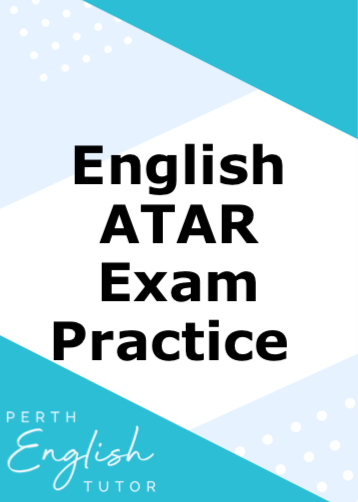If you look through past WACE exam papers, the term “voice” comes up over and over again. But what is voice?
And how do you define it?
In essence, voice is the essence of who – and how – the story you are reading is told.
It’s the Nick Carraway from The Great Gatsby. It’s the Offred from The Handmaid’s Tale. It’s the essence and the lens through which we are told a story.
So what are the elements of voice?
- Diction
- Selection of Detail
- Imagery
- Syntax
- Tone
These five elements are the key pieces that create the narrative voice of a text.

WACE English Practice Exam
This WACE English Practice Exam will help you practice for your upcoming exam.
The practice is divided into the three sections of the exam; Comprehending, Responding, and Composing.
The guide will help you "flex" those muscles and give yourself a strategic boost.
Download today!
Send download link to:
Choice of Diction
This is the choice of words that the author makes when writing their story.
Words are fundamentally important to the way a story is told. For example, have a look at the difference between the two following phrases:
The dark, dreary day.
The bright, joyous day.
The connotations of these words turn the two phrases into two very different meanings.
There are a number of elements to look at when analysing the choice of diction, which are topic, purpose, formality and connotations. If you can define the specific type of language used (i.e. medical), the purpose (i.e. the effect of the words), the formality (i.e. slang) and the connotations (i.e. the meaning behind the words), you can successfully analyse choice of diction.
Selection of Detail
In simple words, this is all of the factual information that the narrator reveals to the reader that helps them better understand the story.
In order to analyse selection of detail, you must consider why an author would include certain pieces of information – everything has a purpose.
Selection of details focuses the reader’s attention on what the author wants the reader to focus on.
Of course the author cannot give every detail, so they must select the details carefully.
Details turn ideas into the concrete, so there is no ambiguity.
Another consideration to make is – what is left out by the author?
This is significant, too.
Imagery
Imagery is the words and phrases that are used to create a visual representation of a scene in a reader’s head.
Basically, it is an element used by authors to represent sensory experience.
Imagery in literature covers all of the senses; visual, auditory, tactile, gustatory and olfactory.
Most great authors will play with multiple senses and intermingle the senses to portray a clear idea in the reader’s head, evoking a vivid experience.
Imagery can also convey emotions or ideas when used by an author.
In order to discuss imagery in an essay, you must look beyond the figurative language itself, but to the connotations and meaning behind the images.
Syntax
Syntax is the way that words are arranged in sentences, and can be used to express the personality of the narrator.
Whilst most sentences follow the structure of a subject and a verb, writers will often manipulate and play with the structure of sentences for a particular purpose.
There are a few elements you must consider when you are looking to explore syntax.
Firstly, you must consider the sentence length. This is used by authors to make meaning. Is a sentence short to grab your attention? Is it long to build imagery?
This is an important consideration.
Secondly, you must consider the focus of the sentence as authors will work to emphasise different ideas. Look out for the repetition of words and the emphasis of different phrases that appear significant.
Consider punctuation such as semicolon, colour, and dash.
Tone
The tone of the narrator is the expression of the attitude that a writer uses to tell the story.
Writers create a tone using a number of different devices that work together to create the author’s central mood.
When you describe a tone, you must use an adjective to describe the central voice you believe that has been developed.
Tone can assist you in understanding meaning. Is it suspenseful? Is it melancholy? Is it joyful? Identifying this is your key to unlocking the idea of the text.
So now that you understand voice, how about a voice question?
Explore how the narrative voice of a text can shape readers’ attitudes towards controversial ideas?
Need more help? Contact me today.


